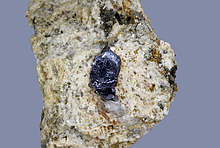Home PageAbout MindatThe Mindat ManualHistory of MindatCopyright StatusWho We AreContact UsAdvertise on Mindat
Donate to MindatCorporate SponsorshipSponsor a PageSponsored PagesMindat AdvertisersAdvertise on Mindat
Learning CenterWhat is a mineral?The most common minerals on earthInformation for EducatorsMindat ArticlesThe ElementsThe Rock H. Currier Digital LibraryGeologic Time
Minerals by PropertiesMinerals by ChemistryAdvanced Locality SearchRandom MineralRandom LocalitySearch by minIDLocalities Near MeSearch ArticlesSearch GlossaryMore Search Options
The Mindat ManualAdd a New PhotoRate PhotosLocality Edit ReportCoordinate Completion ReportAdd Glossary Item
Mining CompaniesStatisticsUsersMineral MuseumsClubs & OrganizationsMineral Shows & EventsThe Mindat DirectoryDevice SettingsThe Mineral Quiz
Photo SearchPhoto GalleriesSearch by ColorNew Photos TodayNew Photos YesterdayMembers' Photo GalleriesPast Photo of the Day GalleryPhotography
╳Discussions
💬 Home🔎 Search📅 LatestGroups
EducationOpen discussion area.Fakes & FraudsOpen discussion area.Field CollectingOpen discussion area.FossilsOpen discussion area.Gems and GemologyOpen discussion area.GeneralOpen discussion area.How to ContributeOpen discussion area.Identity HelpOpen discussion area.Improving Mindat.orgOpen discussion area.LocalitiesOpen discussion area.Lost and Stolen SpecimensOpen discussion area.MarketplaceOpen discussion area.MeteoritesOpen discussion area.Mindat ProductsOpen discussion area.Mineral ExchangesOpen discussion area.Mineral PhotographyOpen discussion area.Mineral ShowsOpen discussion area.Mineralogical ClassificationOpen discussion area.Mineralogy CourseOpen discussion area.MineralsOpen discussion area.Minerals and MuseumsOpen discussion area.PhotosOpen discussion area.Techniques for CollectorsOpen discussion area.The Rock H. Currier Digital LibraryOpen discussion area.UV MineralsOpen discussion area.Recent Images in Discussions
Mineralogical ClassificationIMA 2013-073 = hydroxycalciomicrolite
9th May 2017 14:00 UTCMarco E. Ciriotti Manager
▪ Andrade, M.B., Yang, H., Atencio, D., Downs, R.T., Chukanov, N.V., Lemée-Cailleau, M.H., Persiano, A.I.C., Goeta, A.E., Ellena, J. (2017): Hydroxycalciomicrolite, Ca1.5Ta2O6(OH), a new member of the microlite group from Volta Grande pegmatite, Nazareno, Minas Gerais, Brazil. Mineralogical Magazine, 81, 555-564.
Abstract:
Hydroxycalciomicrolite, Ca1.5Ta2O6(OH) is a new microlite-group mineral found in the Volta Grande pegmatite, Nazareno, Minas Gerais, Brazil. It occurs as isolated octahedral and as a combination of octahedral and rhombic dodecahedral crystals, up to 1.5 mm in size. The crystals are yellow and translucent, with a white streak and vitreous to resinous luster. The mineral is brittle, with a Mohs hardness of 5 - 6. Cleavage is not observed and fracture is conchoidal. The calculated density is 6.176 g/cm3. Hydroxycalciomicrolite is isotropic, ncalc. = 2.010. The infrared and Raman spectra exhibit bands due to O-H stretching vibrations. The chemical composition determined from electron microprobe analysis (n = 13) is (wt. %): Na2O 0.36(8), CaO 15.64(13), SnO2 0.26(3), Nb2O5 2.82(30), Ta2O5 78.39(22), MnO 0.12(2), F 0.72(12) and H2O 1.30 (from the crystal structure data), O=F -0.30, total 99.31(32), yielding an empirical formula, (Ca1.48Na0.06Mn0.01)Σ1.55(Ta1.88Nb0.11Sn0.01)Σ2.00O6.00[(OH)0.76F0.20O0.04]. Hydroxycalciomicrolite is cubic, with unit-cell parameters a = 10.4205(1) Å, V = 1131.53(2) Å3 and Z = 8. It represents a pyrochlore supergroup, microlite group mineral exhibiting P4332 symmetry, instead of Fd-3m. The reduction in symmetry is due to long range ordering of Ca and vacancies on the A sites. This is the first example of such ordering in a natural pyrochlore, although it is known from synthetic compounds. This result is promising because it suggests that other species with P4332 or lower-symmetry space group can be discovered and characterized.




Mindat.org is an outreach project of the Hudson Institute of Mineralogy, a 501(c)(3) not-for-profit organization.
Copyright © mindat.org and the Hudson Institute of Mineralogy 1993-2024, except where stated. Most political location boundaries are © OpenStreetMap contributors. Mindat.org relies on the contributions of thousands of members and supporters. Founded in 2000 by Jolyon Ralph.
Privacy Policy - Terms & Conditions - Contact Us / DMCA issues - Report a bug/vulnerability Current server date and time: April 20, 2024 04:22:46
Copyright © mindat.org and the Hudson Institute of Mineralogy 1993-2024, except where stated. Most political location boundaries are © OpenStreetMap contributors. Mindat.org relies on the contributions of thousands of members and supporters. Founded in 2000 by Jolyon Ralph.
Privacy Policy - Terms & Conditions - Contact Us / DMCA issues - Report a bug/vulnerability Current server date and time: April 20, 2024 04:22:46











